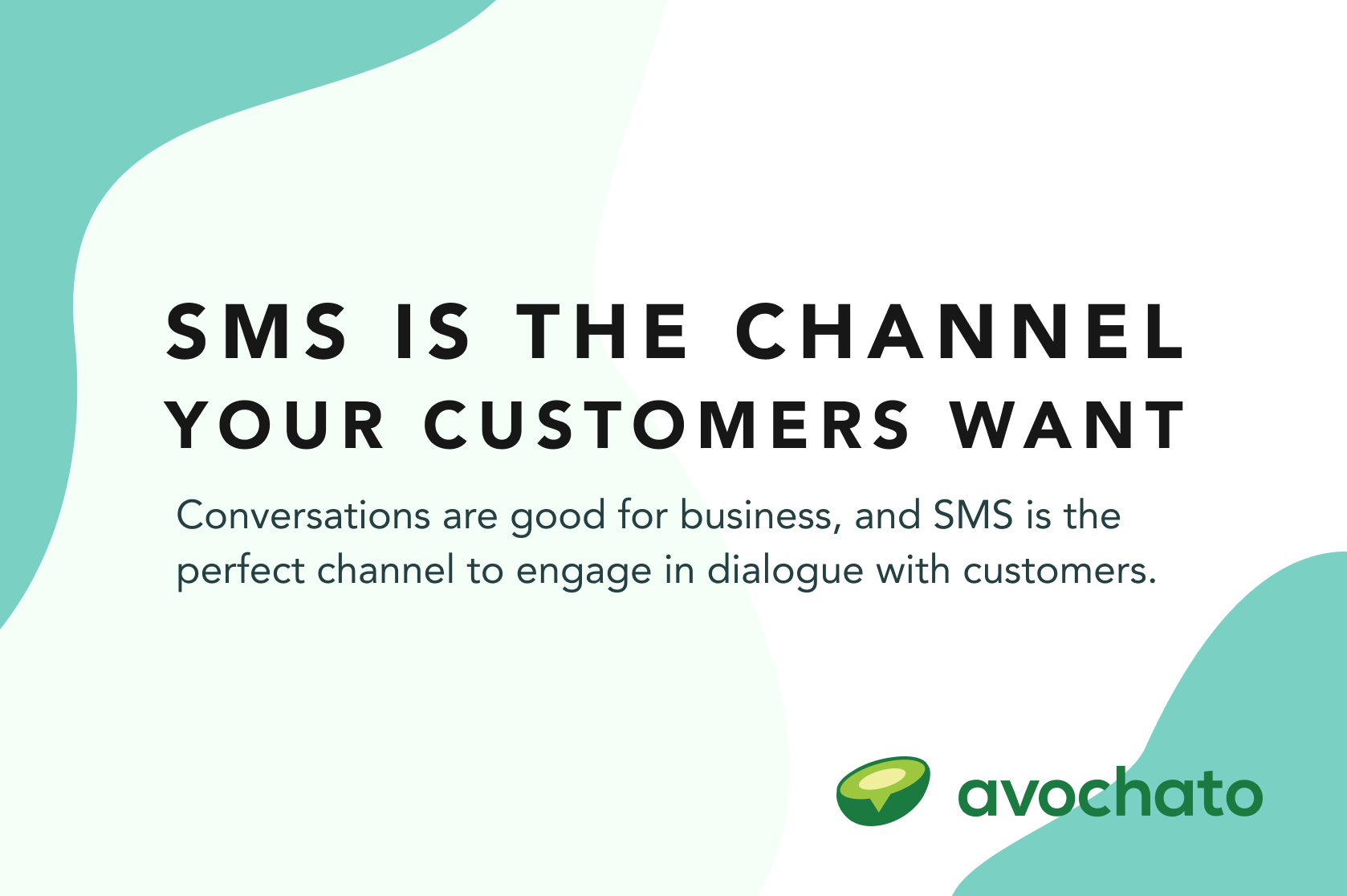
SMS is a channel that’s built for conversations.
It’s different from email marketing and traditional and digital advertising in that its ideal purpose is to connect with another person one-to-one. It’s not meant to be used as a tool to blast a message to as many people as possible and then forget it.
Of course, advertisements and emails can be interactive, and they have significant value for marketers. However, when text messaging is added to your suite of marketing tools, not only do you have the power to develop more personal, two-way, relationship-building conversations.
If you’re ready to start having a dialogue with your customers, now’s the time to add SMS to your communications repertoire.
Why conversations are good for business
Listening to customers is not a new concept in business. Active empathetic listening (AEL) was developed in 2006 as a tool for salespeople. Essentially, AEL was a way to listen better to consumers, relate to them and, in the end, make more sales.
There are three main parts to active empathetic listening, including sensing, processing and responding. Sensing, or simply listening, is the primary tenet to this method and comes first. This is when a salesperson listens to what the customer has to say. Easy enough. The second part of AEL is processing, which is simply understanding what the customer has said. And finally, the response is the third part. These three steps aren’t anything we can’t grasp right away. In fact they’d be easy enough to explain to a child. Why? Because it has almost nothing to do with sales and everything to do with the act of having a conversation, something we’re all programmed to do when we’re very little.
Conversation is a back and forth between people. It’s an exchange of ideas.
In today’s marketing, there are plenty of opportunities to speak to our audiences through advertising and email marketing campaigns. But would customers rather be having a conversation with the brands they do business with?
The answer is actually yes. Customers want to be able to talk back to you. Nine out of 10 consumers say they’d love to get in touch with brands to give feedback, but only 46 percent ever get the chance. And more than half (58 percent) of consumers report reaching out to a company via text message only to hear nothing back. That’s a lot of people who want to have a conversation with companies but can’t.
Think of the possibilities that would open up if the other half of brands opened up their lines of communication so customers could continue the conversation. Consumers want to form a connection with your business. All you have to do is let them.
What happens when you have conversations with customers?
People want to feel connected to brands. In fact, three-quarters of consumers say they’d buy from a brand they feel connected to over a competitor. This feeling of connection breeds trust, which builds relationships over time.
Not only does creating a dialogue between a company and its customers bring those customers the satisfaction of a more down-to-earth relationship with a brand they love, but dialogue also brings in valuable information that you can use.
Imagine you sent a text to a new customer, asking how they’re liking their new product. Now imagine they write back to you right away and tell you it’s not working properly and they need help. That information, delivered as part of a meaningful conversation, can not only help you engage that customer and build trust (as you work quickly toward fixing their issue), but it can actually help you improve your product so others don’t have the same problem going forward.
Why SMS is the best conversational channel
SMS provides businesses with one of the best ways to carry out a conversation with customers for several reasons. First, text messaging is the only channel that has a nearly perfect open rate. Almost all (98 percent) of texts are read. The quality of the conversation vastly improves when you can actually have one.
Second, SMS is fast. It’s true that 90 percent of texts are read in the first three minutes of receiving them. That’s lightning speed compared to email and even to phone conversations, which may take time or turn into voicemails that go unanswered.
The third reason text messaging is the best channel for conversations piggybacks off speed. It’s the ability to have a back and forth. If conversations are the exchange of ideas, then text messages can aid companies in improving the efficiency of how those ideas are exchanged. The faster the medium, the more natural the exchange, and the more information that can pass from one party to the next, and vice versa.
Additionally, text messaging promotes casual chats and takes away some of the formality that could be a barrier to trusting, truthful convos.
The personal touch that comes from pinging someone on their phone means that texts from businesses should, first and foremost, consider privacy and preferences. But it also means that they can get someone’s attention right away — if not as an immediate alert, then as a message waiting on a locked phone screen. Either way, your contacts are almost guaranteed to see your text message. And it’s the same way your customers are communicating with their friends and family, which means it’s natural and highly intuitive by today’s standards.
Conversations over text are low pressure but high return for businesses and their customers.



